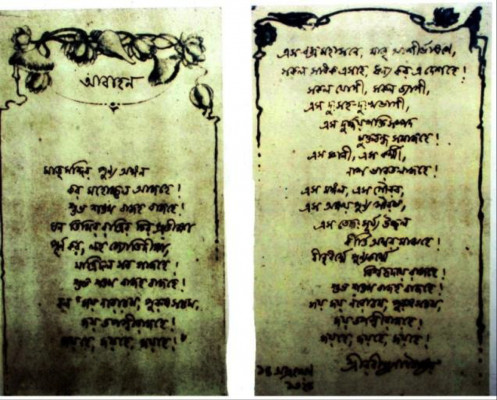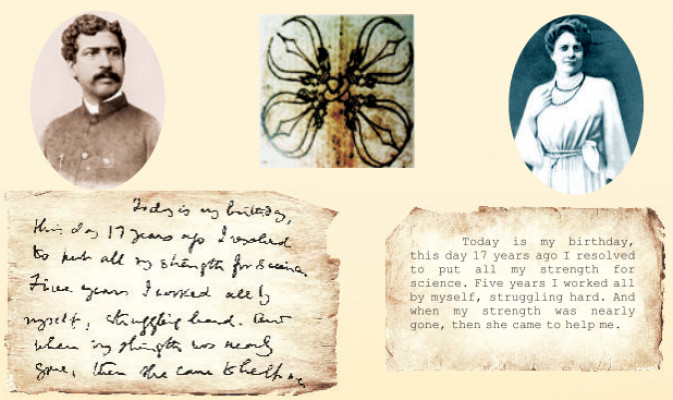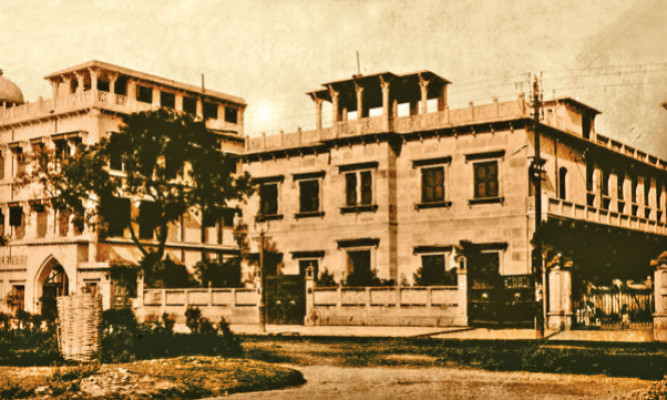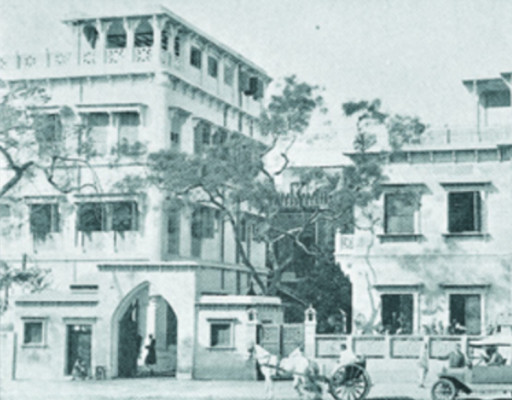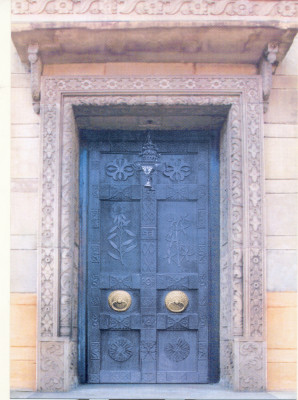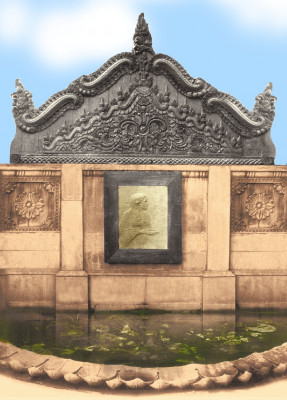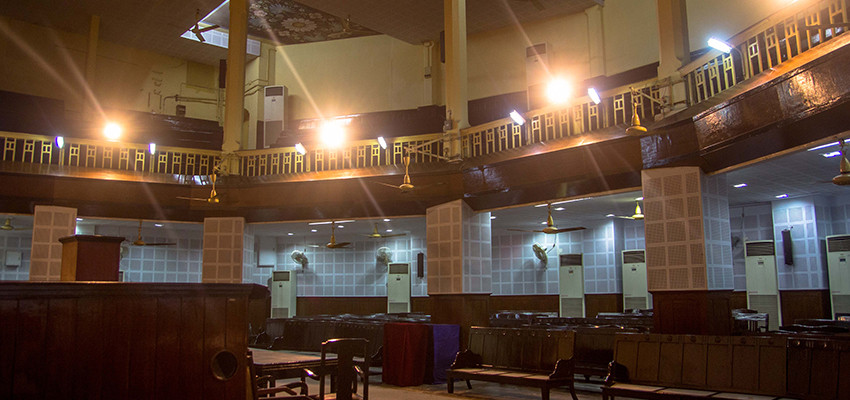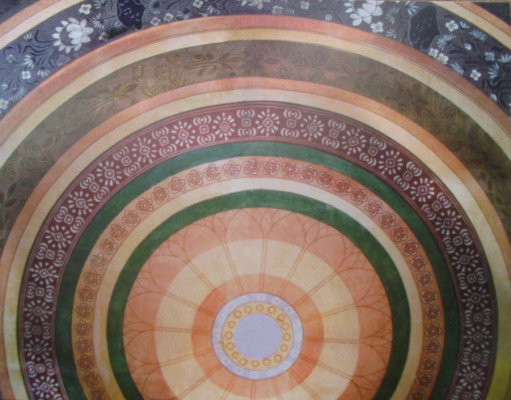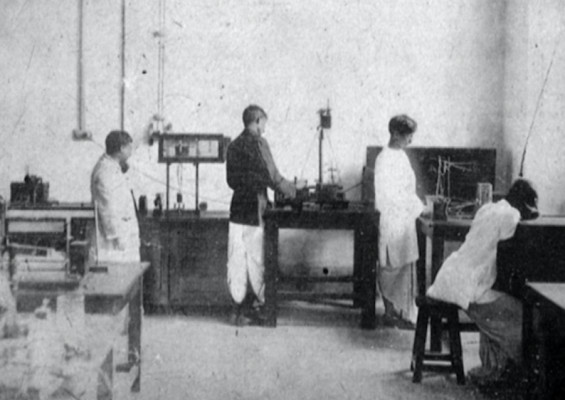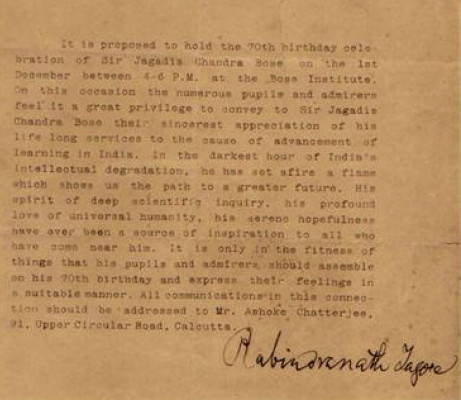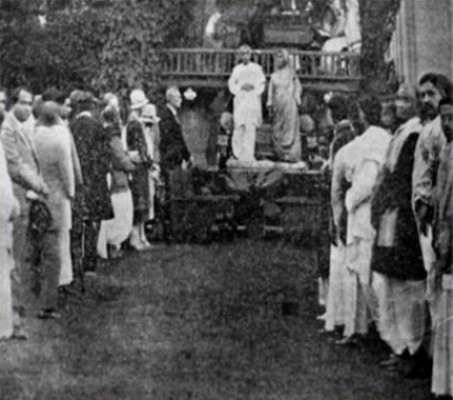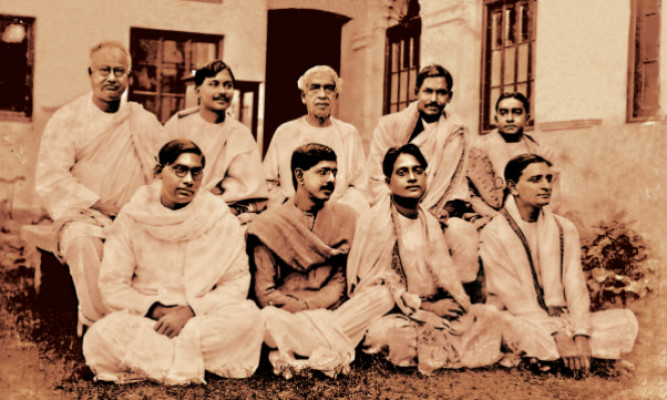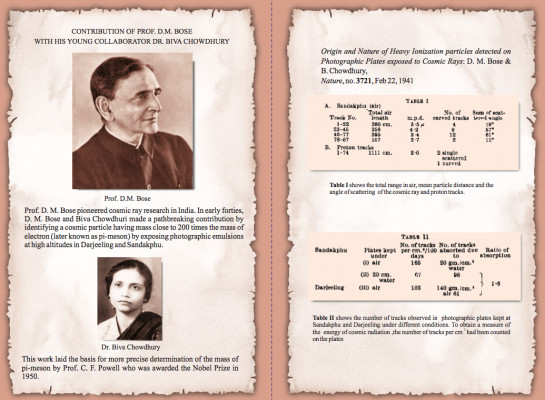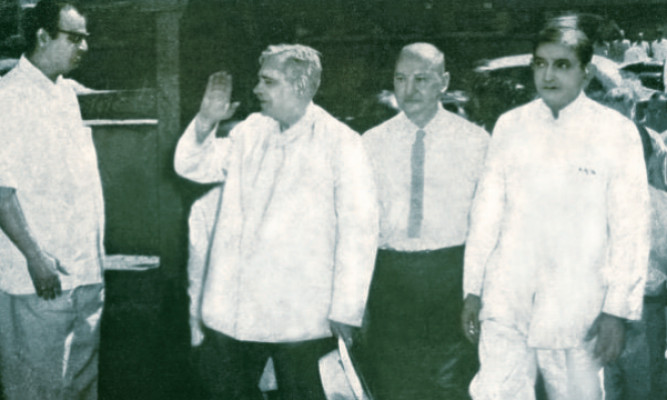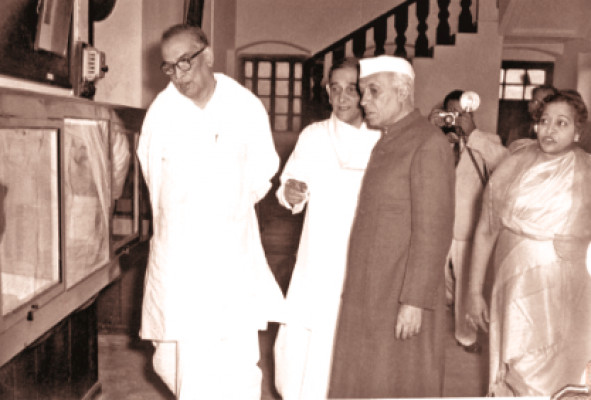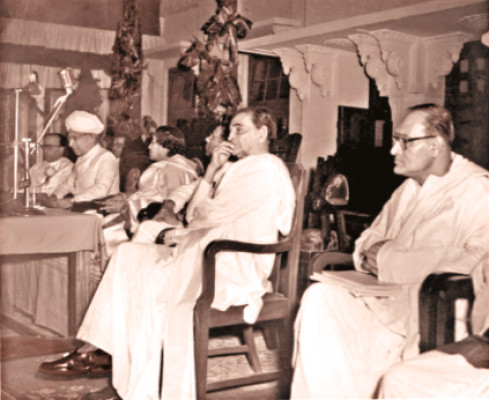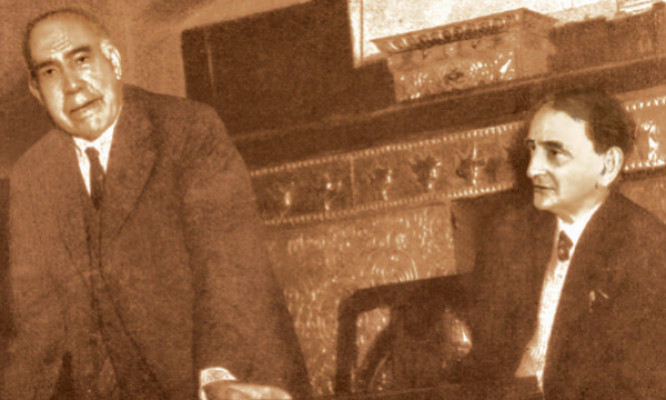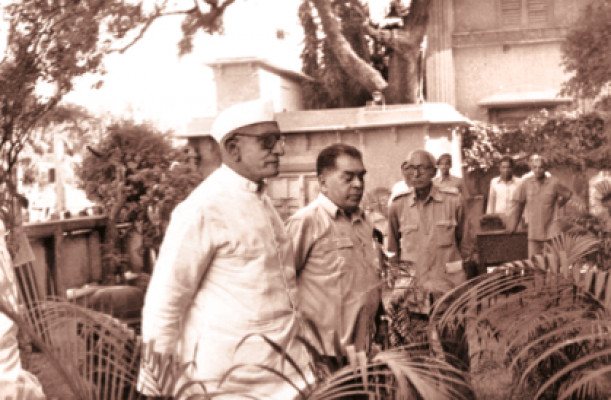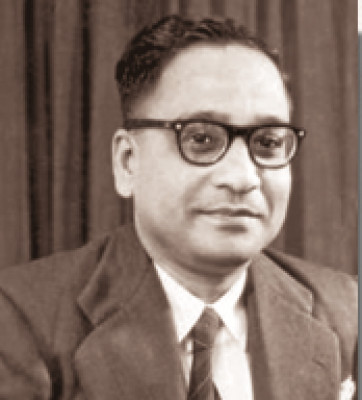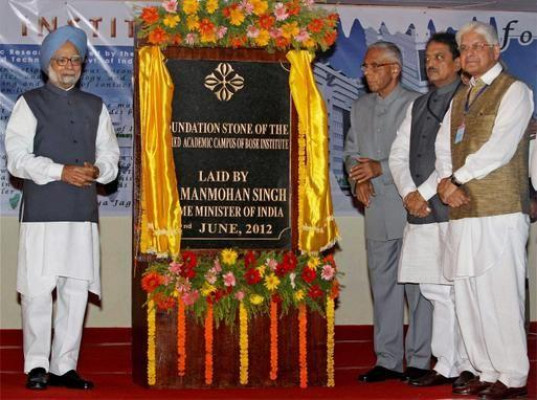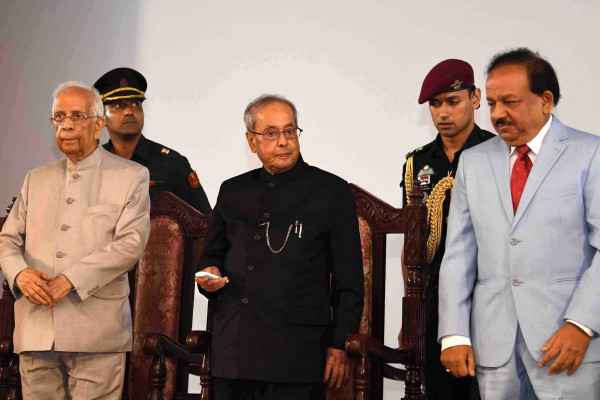History
Related: Founder, museum, architecture, instruments, gallery, media
Inspired by lofty nationalistic ideals, Sir Jagadish Chandra Bose (1858 - 1937), the father of modern science in the Indian subcontinent, founded Bose Institute. Acharya J C Bose dedicated the Institute to the service of the nation on his sixtieth birthday (November 30'th, 1917), while delivering his famous speech "The voice of life". Rabindranath Tagore who was then visiting USA, composed the soul-stirring "Matri mondiro punya angono" for the occasion. This song (manuscript in Bengali and translation in English) is the anthem of the Institute. The Institute was founded as "not merely a laboratory but a temple", with its principal aims being the advancement of science and diffusion of knowledge.
Swami Vivekananda, Sister Nivedita (whose influence is reflected in the institute's emblem of vajra), Sara Chapman Bull (whose generous philanthropy was significant in setting up of the Institute) and Rabindranath Tagore were among those who had consistently inspired and supported J. C. Bose in his endeavours. A meeting of the Governing body of Bose Institute was held on 8th September 1919 under the Chairmanship of Sir Nilratan Sircar wherein it was "Resolved that Lord Sinha, Sir Rabindranath Tagore and Mr B.N. Basu be elected members of the Governing Body." Subsequently, luminaries like Birbal Sahni, Shanti Swarup Bhatnagar, Sisir Kumar Mitra, Raja Ramanna, MS Swaminathan etc. have been associated with the Governing Body / Council of the Institute.
The founder of modern Indian art, Abanindranath Tagore wrote in his memoirs that Bose wanted the Institute building to be one of the finest in the city and the pink sandstone was brought from Chunar and the stone craftsmen from Benaras. Abanindranath and his equally illustrious student Nandalal Bose generously helped the Institute on the artistic aspects. The Bengalee, a well-known newspaper wrote on December 1, 1917 - "The building which has been constructed by a young architect AN Mitter is a striking and dignified one." At the entrance to the building is a marble relief of Sister Nivedita by the renowned sculptor, Padmasri Vinayak Pandurang Karmakar. This was done on the lines of Nandalal Bose’s famous painting of Nivedita, named “The lady with the lamp”.
Bose Institute is Asia's first modern research centre devoted to interdisciplinary research. Since inception, the Institute has been visited by numerous stalwarts, such as the writer Aldous Huxley (1926), heads of foreign states like King Albert I of Belgium (1925) and President Brezhnev of USSR (1959). Over the decades, many Nobel laureates from several countries like Neils Bohr, Archibald Hill, Robert Millikan, Frédéric Joliot-Curie, Irene Joliot-Curie, Joshua Lederberg, Patrick Blackett, Sir John Cockroft, Arthur Kornberg, Robert Synge, Gerhard Herzberg, Subrahmanyan Chandrasekhar, Paul Crutzen, Richard Ernst, Har Gobind Khorana, Sir George Porter, Sir Anthony Leggett, Harald zur Hausen, Sir Richard Roberts, Derek Barton, Venkatraman Ramakrishnan, Ada Yonath etc. have visited the Institute. The Institute has also been visited by many distinguished scientists like Ronald Fisher, George Gamow, Sir Harold Jeffreys, E Newton Harvey, John D Bernal, Sir Harold Spencer Jones, Harlow Shapley, Farrington Daniels etc.
Over the last century, the Institute has endlessly strived to preserve the legacy of its illustrious founder. Scientists of the Institute have won many laurels in form of S.S. Bhatnagar Prize, fellowship of The World Academy of Sciences (TWAS) as well as fellowships of all national science academies in India. In addition, many of them have been conferred INSA young scientist award, Rockefeller Foundation fellowship, Nehru fellowship, K.S. Krishnan fellowship, Homi Bhabha fellowship etc. Members of the Institute have also been leaders in science popularisation and have won the highest literary awards in Bengali, namely the Rabindra Puraskar and the Ananda Puraskar.
A large number of Institute alumni are reputed experts in their fields. Indeed, some of them have founded new Institutions of repute.
Ever since the establishment of the Dept. of Science and Technology (DST), Govt. of India in May 1971, Bose Institute has been an autonomous grant-in-aid institution of DST.
Following is a brief list of the selected scientific achievements of the Institute.
* Debendra Mohan Bose and his co-workers made globally recognised contributions in cosmic rays including the first recording of mu-meson tracks. Later he made further pioneering contributions on the susceptibility measurement of paramagnetic compounds.
* Shyama Das Chatterjee pioneered the study of fission phenomena and the measurement of environmental radioactivity and radiocarbon dating.
* Gopal Chandra Bhattacharya, an entomologist threw new light on the mechanism of how queens in insect societies produce other queens, workers or soldiers. A legendary popular science writer of Bengali, he also won the Rabindra Puraskar and Ananda Puraskar. In 2005, the West Bengal Government instituted an annual award for science popularisation in his memory.
* Furthering the legacy of our founder, most of the experiments were conducted with instruments designed and built internally, by researchers like Ananda Mohan Ghosh.
* The institute was actively involved in the pioneering discovery of Cholera Toxin and its role in the pathogenesis of Cholera by Prof. Shambu Nath De. This led to a breakthrough in the understanding of the molecular mechanism of toxin-receptor interaction in microbial pathogenesis. For this, De was nominated by Joshua Lederberg for the Nobel Prize.
* Prof. B. B. Biswas and his group demonstrated the multiplicity of RNAP from higher plant sources. His group also discovered the inositol phosphate cycle in plants.
* The institute has conducted path-breaking research in the fields of plant sciences, structural biology, molecular biology, biomedical sciences and biotechnology.
* We are a national pioneer in research on astroparticle physics and cosmic rays, foundations of quantum physics and interdisciplinary physics.
